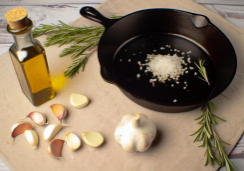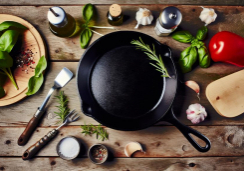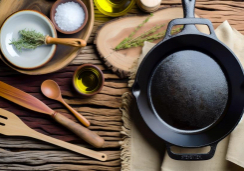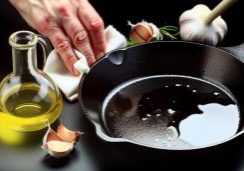Unlock Gluten-Free Baking: Tips & Delicious Recipes
Around 1 in 100 people worldwide are affected by celiac disease, necessitating a strict gluten-free diet, yet countless others opt for gluten-free options for various health benefits.
As you venture into the realm of gluten-free baking, you'll quickly discover that it's an art form rife with unique challenges and rewards.
You must consider factors like the right blend of flours to replicate the texture of gluten, techniques to retain moisture that wheat flours naturally provide, and the intricate balance of ingredients that can make or break your culinary creations.
We'll explore the secrets to achieving that perfect rise, the golden crust, and the tender crumb, all without a speck of gluten in sight.
With this knowledge at your fingertips, you're on the brink of transforming your home baking from frustrating guesswork to confident, delectable success.
Mastering Gluten-Free Flours
Navigating the world of gluten-free flours can transform your baking by understanding their unique properties and how they affect the texture, taste, and structure of your favorite treats. To ensure success, you'll want to select the right gluten-free flour blend. These blends are tailored to mimic the properties of wheat flour while being safe for those with gluten sensitivities.
Gluten-free flours often absorb more liquid and are finer than wheat flour, which can alter the outcome of your baked goods if you're not careful.
You'll find that xanthan gum or guar gum are essential in gluten-free baking to replace the binding qualities of gluten. These additives help give your treats the right texture and prevent them from crumbling. When you use gluten-free flour blends, they may already include xanthan gum or guar gum, saving you the hassle of adding them separately.
Perfecting Moisture Balance
To achieve the perfect moisture balance in gluten-free baking, it's crucial to experiment with various ingredients known for their moisture-retaining qualities, such as pureed fruits, sour cream, or yogurt. These components can make a significant difference in the texture and taste of your gluten-free baked goods.
Adding pureed fruits not only contributes moisture but also infuses your recipes with natural sweetness and essential nutrients.
Incorporating sour cream or yogurt into your gluten-free dough can enhance the tenderness and richness of your creations, thanks to their fat content and acidity. These ingredients help to add moisture and can interact beneficially with other components, such as xanthan or guar gum, which gluten-free baking requires for structure and elasticity.
To further boost moisture, consider using brown sugar instead of white, as it contains more molasses, which adds moisture and a deeper flavor. Dry milk powder can also lend a helping hand in your recipes, providing additional protein that can hold moisture.
Be measured with adding extra eggs or oil; they can indeed increase moisture but may also affect the final structure of your baked goods. And don't overlook the role of fats like coconut oil, which contributes to a moist crumb in cakes and bread.
Essential Baking Techniques
Mastering essential baking techniques ensures your gluten-free creations have the optimal texture and flavor, which begins with adjusting the baking times to suit the specific type of pan you're using. To convert your favorite recipes to gluten-free alternatives, you'll need to embrace trial and error. Without gluten to develop that classic structure, you might need to add additional leaveners. For every cup of gluten-free all-purpose flour, use 2 teaspoons of baking powder to ensure your baked goods rise appropriately.
In your journey to successful gluten-free baking, consider storing your grains and starches in the refrigerator or freezer to maintain their freshness. This is crucial because gluten-free flours can often go rancid more quickly due to their higher fat content.
Enhancing flavor is also key. Since gluten-free flours can be bland, don't hesitate to add extra vanilla, spices, or other flavorful ingredients. Moisture can be another challenge in gluten-free recipes. To combat this, incorporate moisture-boosting elements like pureed fruit or yogurt, which can provide a tender crumb to your baked goods. Remember, a lower temperature might be necessary to prevent over-browning, as gluten-free items often require a gentler touch.
Keep these Gluten-Free Baking Tips in mind, and you'll be well on your way to delicious Gluten-Free Recipes.
Recipe Adaptation Strategies
While considering these essential baking techniques, let's focus on how you can personalize your gluten-free recipes to better fit your taste and health requirements.
Recipe adaptation strategies for gluten-free baking recipes are vital to ensure your creations are both delicious and suitable for your dietary needs. When adapting flour use, precise measurement is key; weigh your grains and starches—like rice flour, almond flour, and potato starch—in grams or ounces for accuracy.
For your health-conscious palate, consider the nutrient profile of your flours. Almond flour, for instance, adds protein and healthy fats. If you're aiming to enhance texture, rice flour works well, but remember to add a little xanthan gum to mimic gluten's binding properties. Potato starch can lighten up your bake, giving it a desirable fluffiness.
Don't forget about leavening agents. They can make or break the rise of your gluten-free bread or cake. Ensure you're using the correct amount as too much can cause your baked goods to collapse, while too little won't give them the necessary lift.
Resting the batter allows the flours and starches to hydrate properly, leading to improved texture. And don't be afraid to play with flavor—add a little cinnamon or vanilla to cater to your taste buds.
With these strategies, you'll unlock the full potential of your gluten-free baking.
What are some delicious gluten-free recipes to try out?
Diving into the world of gluten-free delights, aspiring chefs can explore a myriad of delectable options. From fluffy almond flour pancakes to zesty lemon polenta cake, the variety is endless. For home bakers looking to perfect their skills, exploring glutenfree baking tips recipes can elevate simple dishes to gourmet creations, ensuring every meal is a scrumptious success that caters to dietary needs without compromising on taste.
Showcasing Signature Recipes
Discover how selecting the right gluten-free flour, like nutrient-rich coconut or quinoa flour, can elevate your signature recipes from good to great. Each gluten-free flour brings its own unique properties to baking.
For instance, coconut flour is highly absorbent and rich in fiber, protein, and healthy fats, making it an excellent choice for tender baked goods.
Quinoa flour, on the other hand, offers a complete protein profile and a nutty flavor that can enhance the complexity of your dishes.
When crafting your gluten-free recipe, the precision of ingredients is paramount. Ensure you're using the correct leavening agents, such as baking powder or baking soda, in the right quantities to achieve the desired rise. Fresh ingredients, including fruits and vegetables, can add moisture and natural sweetness, as seen in a classic gluten-free banana bread.
Pay close attention to baking times and oven temperature, which may vary from traditional recipes. A kitchen thermometer can help you maintain the perfect heat. Additionally, using parchment paper can prevent sticking and contribute to even baking.
Conclusion
You've now got the tools to master gluten-free baking! Remember, choosing the right flours is crucial for texture, while nailing moisture balance ensures a tender crumb.
Embrace the techniques shared, adapt recipes with confidence, and delight in those signature treats. Baking gluten-free doesn't mean compromising on taste or health.
With these evidence-based tips, you're set to bake up nutritious, mouthwatering creations that everyone will love.
Happy baking!










